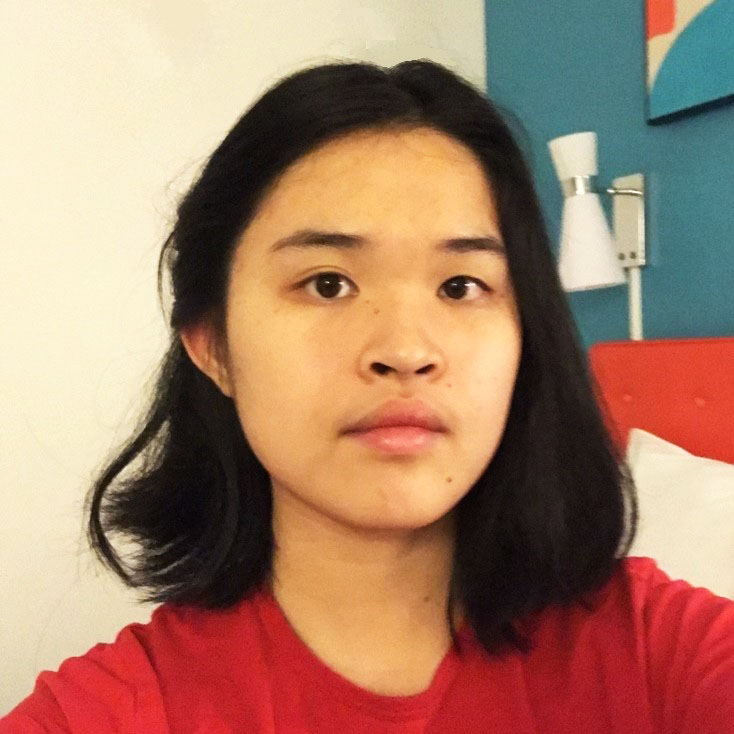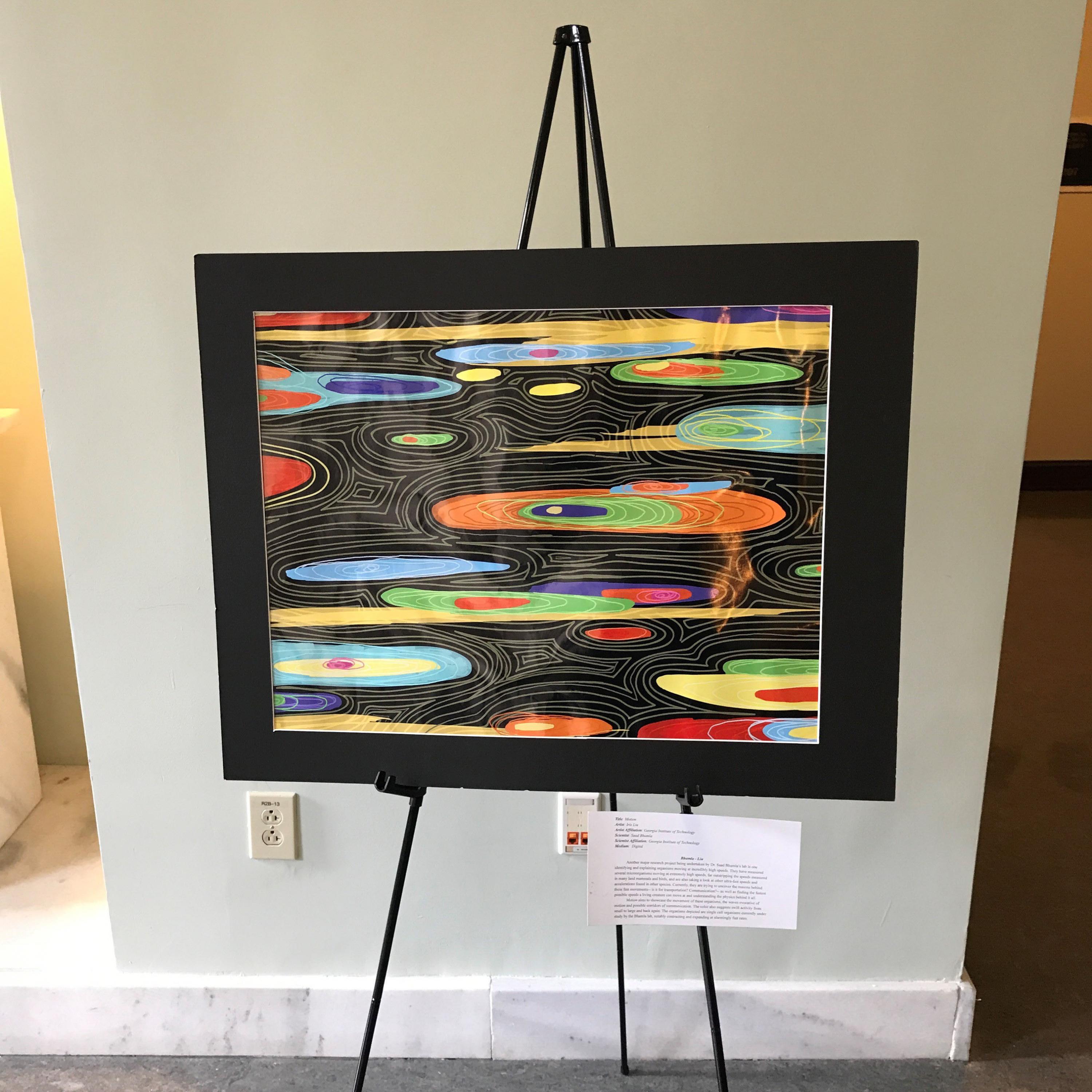At first glance, the image looks like a work of modern art. Elliptic shapes of sun-hued orange, apple green, and baby blue on a black background – all surrounded by motion lines – draw the eye. This seemingly alien setting is, however, actually a research illustration.
The painting, created by Georgia Tech undergraduate Iris Liu, was part of a collaboration with Saad Bhamla, an assistant professor in the School of Chemical and Biomolecular Engineering. The partnership was facilitated by Science. Art. Wonder (SAW), a campus organization that pairs researchers at Tech and Emory University with artists – mainly students – who then imaginatively conceptualize the research.
Liu is a third-year undergraduate in the H. Milton Stewart School of Industrial and Systems Engineering (ISyE). But in addition to her love of math and science, Liu has a strong creative bent, describing herself as “constantly drawing and painting since I was very young.” Her parents enrolled her in formal art classes when she was just four years old. In both eighth and 12th grade, Liu won the Georgia State Fish Art Contest with her acrylic drawings of a bluegill and a northern pike.
Liu’s interest in continuing her artistic endeavors while pursuing STEM studies at Tech led her to SAW, and her work with Bhamla, as part of the 2018 Atlanta Science Festival (ASF). Bhamla was excited to team up with Liu on an artistic representation of his research.
“My view is, ‘Come for the beauty, stay for the science.’ And this project had all the things I was looking for literally in the name: Science. Art. Wonder,” Bhamla said. “This was an opportunity to bridge the divide between art and science and show that science has its own sort of beauty.”
The research that inspired Liu’s painting challenges the commonplace that the cheetah is nature’s fastest animal. Instead, the lab has identified single-cell organisms that are 2200 times faster than a cheetah. Liu illustrated this research by depicting the cells with brightly colored and layered brushstrokes to evoke movement.
Valerie Thomas, the ISyE Anderson-Interface Professor of Natural Systems, also participated in the 2018 Atlanta Science Festival through SAW. Thomas is examining the impact of the global phase-out of leaded gasoline, specifically conducting a meta-analysis on the current state of lead exposure in populations around the world. The experience of working with local artist Paulette Richards led her to think about the research questions differently.
“To connect with the audience, Paulette suggested showing different places around the globe where we have data on lead exposure,” Thomas explained. “To do this, I divided up the data and analyses by continent. This revealed a number of different aspects that I had not noticed when I had all the global data together: We were able to see the substantial progress in Africa; we were able to see the dearth of studies in Australia (which is doubly surprising since Australia is a major lead producer).”
For the 2019 ASF, SAW connected Judith Brennan, a fifth-year double-majoring in ISyE and discrete math, with Bryan Watson, a Ph.D. student in the Woodruff School of Mechanical Engineering. Watson’s research currently studies the topographical placement of bike-share stations.
Following a conversation with Watson about his work, Brennan painted a watercolor landscape replete with dark teal mountains and rolling green hills beneath a vivid sunset. In the distance are a windfarm and a bullet train. An idyllic village lies near a roadway and a railyard, and there’s a bike on the sidewalk.
“My piece focuses on the interaction of humans, technology, and the environment,” Brennan said. “It imagines the landscape we might be looking at in the future, instead of the one we see now.”
As for Liu, she is the current president of Science. Art. Wonder, and she’s helping the organization consider how science can be complemented by art – the “A” in STEAM.
“If you look at industrial engineering, for example, it might not immediately seem like the most creative kind of field,” she noted. “But a lot of IE processes involve people, which means the problems get complicated and messy, and actually take a lot of creativity to solve.
“It’s important to offer people the opportunity to access art through science or science through art,” she added. “That’s the power behind art, behind STEAM – something visually arresting gets created, and a viewer walks by and asks, ‘Hey, what’s going on with this picture?’ It sparks questions, giving researchers an opportunity to reach a bigger audience rather than their work being confined to their labs.”
You can see the art created by Science. Art. Wonder participants at the Atlanta Science Festival’s Exploration Expo, along with 100-plus interactive, hands-on exhibits. The expo will take place at Piedmont Park on March 23rd, 2019, from 11 AM- 4 PM. Science. Art. Wonder also will have a Georgia Tech-specific showcase, with artists and researchers present to discuss their work, on March 30th from 10 AM-4 PM at the CULC and Tech Green sidewalk.
To be informed about Science. Art. Wonder’s events or to get involved, either as a researcher or as an artist, follow the organization’s Facebook page: https://www.facebook.com/sciartwonder/.
For More Information Contact
Shelley Wunder-Smith
H. Milton Stewart School of Industrial and Systems Engineering
404.385.4745


